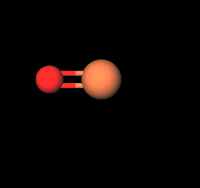Check the ingredients!
... live healthy!


| "Descrizione" by admin (19362 pt) | 2024-Jun-02 09:34 |
Ferrous Oxide, known as ferrous oxide, is chemically classified as an inorganic colorant. This pigment is composed primarily of ferrous oxide (FeO) and is widely used in various industrial and cosmetic applications due to its distinctive color properties and stability.
Chemical Name
Chemical Composition and Structure
Ferrous Oxide is an inorganic compound with the chemical formula FeO. It consists chiefly of ferrous oxide, which is iron in the +2 oxidation state combined with oxygen. This composition gives the pigment its characteristic black or dark gray color.
Physical Properties
This pigment typically appears as a fine black or dark gray powder. It has a high density and excellent covering power. Ferrous Oxide is known for its chemical stability, resistance to light and heat, and inert nature, making it suitable for long-lasting applications. Its magnetic properties and opacity also contribute to its versatility in various uses.
Chemical Industrial Synthesis Process
What it is used for and where
Restricted cosmetic ingredient as IV/134 a Relevant Item in the Annexes of the European Cosmetics Regulation 1223/2009. Substance or ingredient reported:
Cosmetics - INCI Functions
Ferrous Oxide is used in cosmetic products such as eyeliners, mascaras, and eyeshadows due to its intense black color and high opacity. It provides long-lasting color.
Industrial Applications
Paints and Coatings: In the paint industry, ferrous oxide is used to achieve deep black shades and enhance UV resistance. Its stability and strong tinting properties make it ideal for both decorative and protective coatings.
Plastics and Polymers: This pigment is employed in the production of plastics and polymers to improve color uniformity and opacity. It is commonly used in products like automotive parts, packaging materials, and consumer goods.
Ceramics and Glass: Ferrous Oxide is used in the production of ceramics and glass to achieve stable black or dark gray colors. It is particularly valued for its resistance to high-temperature processes.
Inks: The pigment is also used in printing inks to produce intense black or dark gray colors, ensuring high-quality and durable prints.
Medical
Recent developments in the field of cancer drug delivery have used magnetic nano vectors as drug delivery systems (1).
Safety
Ferrous Oxide is generally considered safe for use in consumer products when handled according to proper safety procedures. It is important to avoid inhalation of the powder and minimize direct contact with skin and eyes.
 |  |
Molecular Formula FeO
Molecular Weight 71.84 g/mol
CAS 1345-25-1
EC number 215-721-8
UNII G7036X8B5H
DTXSID1041976
Synonyms:
Ferrous Oxide
Iron Oxides
CI 77489
References_____________________________________________________________________
(1) Vangijzegem T, Stanicki D, Laurent S. Magnetic iron oxide nanoparticles for drug delivery: applications and characteristics. Expert Opin Drug Deliv. 2019 Jan;16(1):69-78. doi: 10.1080/17425247.2019.1554647.
Abstract. Introduction: For many years, the controlled delivery of therapeutic compounds has been a matter of great interest in the field of nanomedicine. Among the wide amount of drug nanocarriers, magnetic iron oxide nanoparticles (IONs) stand out from the crowd and constitute robust nanoplatforms since they can achieve high drug loading as well as targeting abilities stemming from their remarkable properties (magnetic and biological properties). These applications require precise design of the nanoparticles regarding several parameters which must be considered together in order to attain highest therapeutic efficacy....Expert opinion: The design of nanocarriers enabling efficient delivery of therapeutic compounds toward targeted locations is one of the major area of research in the targeted drug delivery field. By precisely shaping the structural properties of the iron oxide nanoparticles, drugs loaded onto the nanoparticles can be efficiently guided and selectively delivered toward targeted locations. With these goals in mind, special attention should be given to the pharmacokinetics and in vivo behavior of the developed nanocarriers.
| Evaluate |